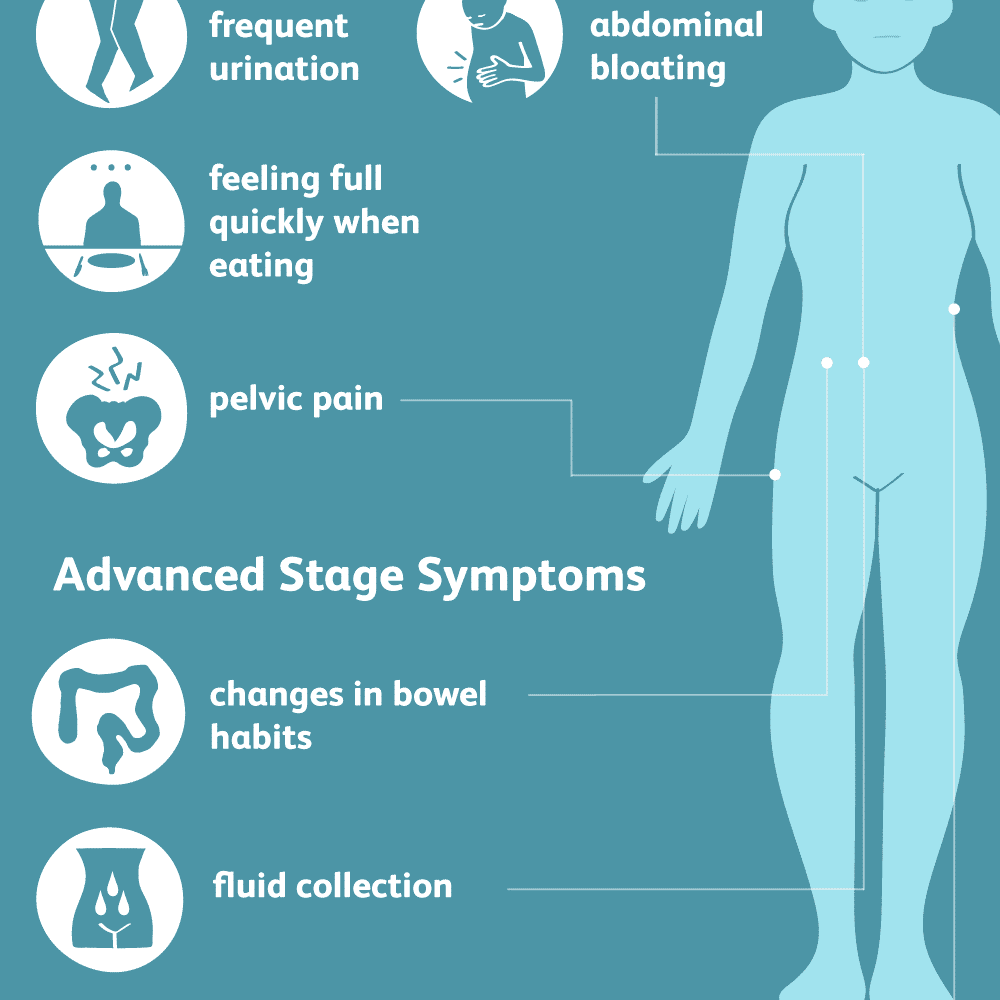“Life is 10% what happens to us and 90% how we react to it.”— Leslie Medley-Russell, ovarian cancer survivor
As per studies, 1 in every 78 women is diagnosed with ovarian cancer in her lifetime.
Ovarian cancer is a rare cancer type that develops owing to the abnormal growth of cells in the ovaries, and these multiply to form a tumor. However, the recent evidence suggests that ovarian cancer can also originate from the Fallopian tubes.
If undetected over a period of time, the tumor rapidly spreads to other body parts, and this medical condition is diagnosed as metastatic ovarian cancer.
Symptoms of Ovarian Cancer

It is of great importance not to overlook the early symptoms of ovarian cancer, as this will help you treat this disease and quickly start your second life.
The symptoms are as follows:-
- Intense Abdominal Bloating, Pressure, & Pain
- Abnormal Fullness After Eating
- An Increase in Urination
- Ever-Long Urge to Urinate
Ovarian Cancer Causes-
While the underlying cause of ovarian cancer is still not determined but multiple factors contribute to the development of tumors in the ovary.
These include a family history of ovarian cancer, genetic mutations of genes, a personal history of breast, colon, uterine cancer, obesity, long-term use of fertility drugs.

There are media reports claiming that talcum powder from a top brand has resulted in thousands of talcum powder lawsuits in the US. A strong medical connection has been found between talcum powder and cancer that has caused general panic and concern over the use of general baby care products.
As per the National Center for Health Research, a female body develops cancer because of the inflammation that is caused by the use of talcum powder on the genitals.
Diagnosis of Ovarian Cancer
Pelvic Exam:-
The doctor will insert a gloved finger into the vagina and at the same time, press the hand on the abdomen to feel the lump or swelling.
Visual Testing:-
Visual tests are done in the form of Ultrasound or CT scans of the pelvis and abdomen to identify the shape, size, and type of ovary lump.
Blood Test:-
The blood test will tell the doctor about the patient’s overall body health. Additionally, the increased amount of protein produced by the ovaries is a sign of tumorous growth.
Treatment of Ovarian Cancer
The treatment of the ovarian tumor involves a combination of chemotherapy & surgery:
Surgery:-
Operation is done to remove ovarian cancer including removing one or both the ovaries, and even uterus in many cases.
Chemotherapy:-
It is a popular drug treatment for all kinds of cancers that utilize chemicals to neutralize the abnormal growth of cancer cells in the ovary.
The drugs are injected through a vein or taken orally, and in some instances, the drugs are injected straightaway into the abdomen. Chemotherapy is done before and after the lump removal surgery to kill cancer-causing cells in the ovaries.
Targeted Therapies:-
The targeted therapies are aimed at hitting the possible vulnerabilities of cancer-causing cells within your body using medications.
The targeted therapy drugs are often prescribed by the doctor in case of ovarian cancer resistant to other treatments or when cancer resurfaces after the initial treatment.
The doctor will analyze every aspect of cancer-causing cells to advise the best-targeted therapy.
Supportive Care:-
Palliative care focuses on providing temporary relief to the patient from the pain and symptoms of ovarian cancer.
Let’s Wrap Up
The timely diagnosis of ovarian cancer is crucial to get started with suitable treatment or combined therapies. If you suspect ovarian cancer, we highly recommend consulting a gynecologist immediately.
Related Posts












